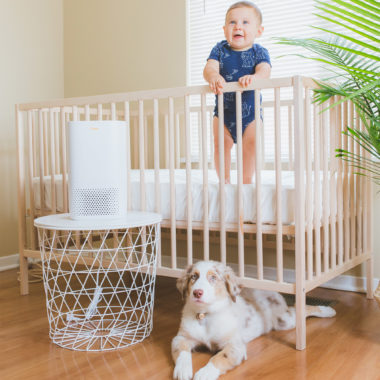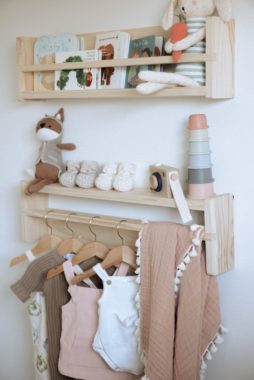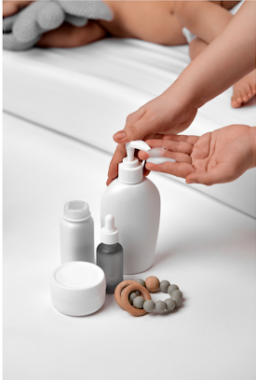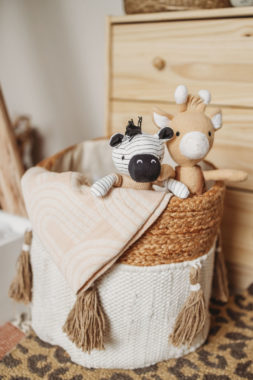The transition from a baby nursery to a toddler room marks an exciting milestone in your child’s growth and development. It’s a time when their independence flourishes, their curiosity expands and their unique personality emerges. As you embark on this journey, it’s important to assess your child’s readiness and carefully plan for the transition so it goes more smoothly for both you and your toddler.
Assessing Their Readiness
When considering the transition, make sure to check for the signs that indicate your child is ready for a toddler room. These signs may include:
- Increased curiosity
- A desire for independence
- A preference for active play rather than confinement in a crib
- Your child has started to climb out of their crib
- Your child is expressing dissatisfaction with limited space

These are all clear indications that the time for a transition has come. Not all of these signs need to be present at the same time, though. Each child develops at their own pace, so observe their behaviors and preferences to determine their readiness for a toddler room.
You’ll also want to consider a few other factors as well:
- Age and developmental milestones
- Sleep patterns and habits
- Safety concerns
- Sibling dynamics (if applicable)
- Emotional preparedness
Planning the Transition
Before you start transforming the space, take some time to develop a vision for the toddler room. Consider a theme that resonates with your child’s interests and personality. If your toddler wants to participate in the process, let them pick a few items out as well. This will make them feel more comfortable and excited about the new space.
Once you have a plan, you’ll want to decide on a budget and also set a realistic timeline for the transition. Account for a bit of fudge room with both in case you need a little more money or time to make the process a success.
Safety Precautions
You’ll want to thoroughly assess the room for potential safety hazards. Remove any sharp objects or small choking hazards. Make sure that all heavy furniture is secured to the wall to prevent tipping accidents. Cover electrical outlets, use cord organizers and ensure that windows are properly locked or guarded. Conduct a comprehensive childproofing evaluation to create a safe environment for your curious explorer.
Select furniture and accessories that are suitable for your child’s age and size. Opt for sturdy, child-friendly materials that can withstand active play and exploration. Choose cribs that can be converted into toddler beds, providing versatility as your child grows. Ensure that the furniture meets all safety standards and has rounded edges to prevent injuries. The University of Georgia offers a child safety checklist you can use to childproof room by room if you’d like to do even more.
Design and Decor

It’s always good to start with a theme or color scheme that reflects your child’s interests and stimulates their imagination. Opt for soothing or vibrant colors, depending on the ambiance you wish to create.
Once you have that figured out, you can enhance the visual appeal of the toddler room with creative elements. For example, you could use wall decor to add personality and charm to the walls. Nursery area rugs provide comfort and define different areas of the room and matching curtains or blinds ensure optimal light control.
Then you can add personalized touches and sentimental items to make the room truly special. You can do this with family photos, artwork created by your child or heirlooms that hold sentimental value. These personal elements create a sense of belonging and warmth in the space.

Sleep Transition
Having your little one transition from a crib to a toddler bed is a significant milestone in your child’s development, and as mentioned above, safety should be your top priority. Once you’ve done this, establishing a good bedtime routine is helpful, as well.
Create a predictable sequence of activities that helps your toddler calm down and prepare to sleep. This can include a relaxing bath, followed by reading a bedtime story and cuddling before lights out. A consistent routine provides structure and signals to your child that it’s time to sleep, promoting a sense of security and relaxation.

Be prepared for potential sleep challenges and regressions during the transition. Your child may have difficulty adjusting to the new sleep environment, and it’s important to be patient and understanding. Nightlights, humidifiers or sound machines can greatly help as well.
Promoting Independence and Learning
Creating a child-friendly environment in the toddler room is essential for fostering exploration and independence. Arrange toys and activities at accessible levels, allowing your child to freely choose and engage with them. Design a safe play space that promotes physical movement and cognitive development, nurturing your child’s curiosity and independence.
Set up a cozy reading nook or bookshelf to cultivate a love for reading. Fill the space with age-appropriate books, providing comfortable seating and good lighting. This dedicated reading area will not only foster a lifelong love of learning but will also serve as a peaceful retreat for your child to explore the world of stories and imagination.

Introduce age-appropriate toys and educational materials that encourage fine motor skills, creativity and problem-solving abilities. Incorporate puzzles, building blocks, plush toys and interactive games that engage your child’s curiosity and promote cognitive growth.
Encourage self-care and organization habits early on. Include child-sized hangers, low hooks or a small wardrobe that allows your child to dress and tidy up independently. Provide a step stool in the bathroom to facilitate handwashing and teeth brushing, instilling a sense of ownership in their personal care routine. These habits foster independence, responsibility and a sense of accomplishment in your growing toddler.
Transitioning from a baby nursery to a toddler room is an exciting and important step in your child’s development. By assessing readiness, planning meticulously, prioritizing safety and creating a stimulating environment, you can ensure a smooth and successful transition.
Remember to provide emotional support, encourage independence and embrace the joys of this new phase. As you watch your child explore, learn and grow in their new toddler room, cherish every moment and enjoy the journey together.